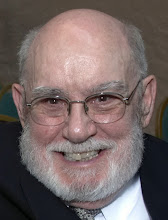I’m fascinated by a concept called, “the suspension of disbelief.” I don’t claim to be an expert, but here’s how I view it.
The concept applies to novels or films or plays that deal with things that are thought to be impossible. One movie, “Tootsie,” comes to mind as an excellent example.
When we walk into the movie theater (or sit down to watch TV) we expect to find what I’ll call “real life,” or, “pretty much real life,” anyway. UNLESS, of course, we know that we are going to see something else, such as fantasy or cartoon or satire, for instance. Normally, we find it hard to believe that a man can pass for a woman…at least not for very long.
Think about such things as height, bulk, muscle, facial hair and voice. We all, I think, are confident we could tell, eventually, that something “is wrong” with this person …who is just “not right,” somehow.
“Tootsie” is just such a challenge. The role is played by Dustin Hoffman, for one thing. Now, he’s not a bad-looking MAN, but he’s ugly for a woman, to be frank. THE STORY ASKS A LOT if we are to believe that the others in the story could ever be fooled by him! But we must believe it if we are to enjoy the film!
Thus, we must SUSPEND what we normally believe to be true, and “go along” with the other actors and BELIEVE THAT THEY ARE ACTUALLY fooled by him----er, her. It isn’t what we believe about HIM, it’s what we believe about THEM that draws us in. We have to accept that they are “taken in” by someone WE’D NEVER BE FOOLED BY, ORDINARILY.
To put it in other words, we sit down to watch this story, CONFIDENT that we can almost always tell the difference between men and women. But NOW we either must accept this IMPOSTER, or get up and leave. We suspend, or “put on hold,” what we accept 24/7, for two hours in order to be entertained.
I submit that we have become so adept at this suspension, that we can enjoy book after book, film after film, play after play just because we have learned it so well. (And it doesn’t diminish our common sense, either!)
In a recent post, I referred to the film “Groundhog Day.” This is another and an excellent example of the suspension concept. If someone tells us that this is the story of a guy who relives a day over and over again, we’d probably avoid seeing it. “That can’t happen,” we’d say.
The secret lies in the question, “What causes us to want to see the NEXT DAY?” On the surface, the answer is, “To see if that next day EVER COMES!”
Now keep in mind that this isn’t a “perfect” scenario. We could probably take a position that there are some small questions aroused by the plot as it unfolds before us. But in the main (where did that old expression come from?) we are already “hooked,” and must see it through.
I find myself quite impressed by those who can “pull off” films like these. They MUST be written well, acted well, cast well, and photographed well in order to succeed. I’d like to see another Oscar category…best S.O.D. picture, actor, etc. (Suspension of Disbelief.)
If any of you are also film buffs, I’d like to hear from you about this question; in “Places in the Heart,” the final scene has been somewhat of a controversy. In light of my S.O.D. concept, what is your “take” on that matter? The best answer, not necessarily the first, will earn a prize.
Next Thursday, I’ll post my thoughts on it.
Friday, November 28, 2008
Subscribe to:
Post Comments (Atom)



2 comments:
I can't answer your question, but thank you for the reminder of S.O.D!
Too many times I find myself hating a film because I can't let go of reality. This is usually when they're filming an area where I have some knowledge, such as with horses or cattle.
My kids will often warn me with a stern, "Remember, it's just a MOVIE, Mom!" if they know I won't like what's coming!
Still, is there a difference between Suspension of Disbelief and getting the facts right? Doesn't there need to be a balance?
My "take" on the end of 'Places In The Heart':
I think the characters who "appear" to be sitting in the church pew with Sally Fields and her children at the end of the film, are literally the people who had a place in her heart. So even though they are gone she still carries them in her heart. Such as her husband, even the young man who shot him, and, of course her handyman. The SOD is that they appear to be sitting there, but they are not. Donna
Post a Comment